20 Crucial Terminology For Defence Aspirants
Hello aspirants,
We all are well aware of how uncertain things are asked in the interview. What we can do is prepare in advance about some of the relevant terms which are asked in some of the SSB over the period. This post will be beneficial for all the aspirants.
So let's begin
We will first start with some of the terms related to arms and infantry
-
Calibre of Gun
- it is the approximate internal diameter of the gun barrel or the width of the projectile it shoots.
- It is measured in hundredths or thousandths of an inch or millimetres.
- For example, a ".45 calibre" firearm has a barrel diameter of 0.45 inches (11 mm).
-
Assault Rifle
- It is a selective-fire rifle that uses an intermediate cartridge and a detachable magazine.
- Assault rifles were first used during World War II.
- Examples include the StG 44, AK-47 and the M16 rifle.
-
Cruise missile
- A cruise missile is a guided missile used against terrestrial targets that remains in the atmosphere and flies the significant portion of its flight path at an approximately constant speed.
- Cruise missiles are designed to deliver a large warhead over long distances with high precision.
- Modern cruise missiles are capable of travelling at supersonic or high subsonic speeds, are self-navigating, and can fly on a non-ballistic, extremely low-altitude trajectory.
-
Ballistic Missile
- A ballistic missile follows a ballistic trajectory to deliver one or more warheads on a predetermined target.
- These weapons are only guided during relatively brief periods of flight—most of their trajectory is unpowered, being governed by gravity and air resistance if in the atmosphere.
-
UAV
- An uncrewed aerial vehicle (UAV), commonly known as a drone, is an aircraft without a human pilot onboard.
- UAVs are a component of an unmanned aircraft system (UAS); which include a UAV, a ground-based controller, and a network of communications between the two.
-
Stealth Technology
- Stealth technology, also termed low observable technology (LO technology), is a sub-discipline of military tactics and passive and active electronic countermeasures.
- It covers a range of techniques used to make personnel, aircraft, ships, submarines, missiles, satellites and ground vehicles less visible (ideally invisible) to radar, infrared, sonar and other detection methods.
-
RADAR
- Radar (Radio Detection and Ranging) is a detection system that uses radio waves to determine the range, angle, or velocity of objects.
- It can be used to detect aircraft, ships, spacecraft, guided missiles, motor vehicles, weather formations, and terrain.
- A radar system consists of a transmitter producing electromagnetic waves in the radio or microwaves domain, a transmitting antenna, a receiving antenna and a receiver and processor to determine properties of the object(s).
-
SONAR
- Sonar (SOund NAvigation Ranging) is a technique that uses sound propagation (usually underwater, as in submarine navigation) to navigate, communicate with or detect objects on or under the surface of the water, such as other vessels.
-
Frigates
- frigates are used to protect other warships and merchant-marine ships, especially as anti-submarine warfare (ASW) combatants
- Ship classes "frigates" have also more closely resembled corvettes, destroyers, cruisers and even battleships but there is a minor difference.
-
Corvette
- A Corvette is a small warship and is traditionally the lowest class of vessel considered to be a proper
- The warship class above the Corvette is that of the frigate.
-
Supersonic
- A supersonic aircraft is an aircraft able to fly faster than the speed of sound (Mach number 1).
- Supersonic aircraft were developed in the second half of the twentieth century and have been used almost entirely for research and military purposes.
- Aircraft flying at speeds above Mach 5 is often referred to as hypersonic aircraft.
-
Command
- The army operates six operational commands and one training command.
- General Officer Commanding-in-Chief heads each command with the rank of lieutenant general.
- The command is directly affiliated to the Army HQ in New Delhi.
-
Corps
- A command generally consists of two or more corps. Indian Army has 14 Corps each one commanded by a general officer commanding (GOC), known as the corps commander, who holds the rank of lieutenant general.
-
Division
- Each division is headed by GOC (division commander) in the rank of major general.
- It usually consists of three to four Brigades.
-
Brigade
- A brigade generally consists of around 3,000 combat troops with supporting elements.
- An Infantry Brigade usually has three Infantry Battalions along with various Support Elements.
- It is commanded by a brigade commander who is a Brigadier, equivalent to a brigadier general in some armies.
-
Battalion
- Composed of four rifle companies.
- It is commanded by a battalion commander who is a Colonel and is the Infantry's central fighting unit.
-
Company
- Composed of three platoons.
- It is commanded by a company commander who is a major or lieutenant-colonel.
-
Platoon
- Composed of three sections.
- It is commanded by a platoon commander who is a JCO.
-
Section
- Smallest military outfit with a strength of 10 personnel.
- It is commanded by a section commander of the rank of Havaldar.
-
COAS
- The Chief of the Army Staff is the professional head, commander, and usually the highest-ranking military officer of the Indian Army.
- The position is abbreviated as COAS in Indian Army and usually held by a four-star officer in the rank of General.
These were 20 essential terms that have been asked in the previous SSB.
e-Books for SSB Preparation
PPDT Naraation &b GD e-Book – Complete GUIDE
Situation Reaction Test – SRT ebook [Part -1]
Hope you like this article
Share and stay connected with DDE for more content.
Jai Hind



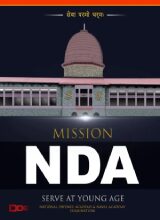
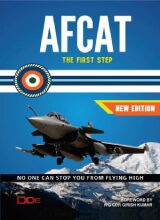

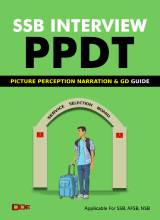
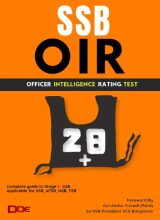
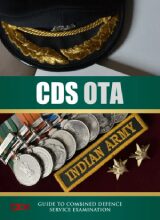
 Buy Now on Amazon
Buy Now on Amazon
